Fundamental parallax error when blending images from multiple camerasWritten by Paul BourkeFebruary 2017
The acquisition of multiple photographs which are then stitched/blended together to form a composite image is a well known technique. The most common applications are panoramic photography and image mosaic/tiling. Whether standard lenses or fisheye lenses, those who work in this area take some care in aligning the poorly named "nodal" point of the camera/lens system, essentially combining multiple camera frustums into a single wider angle view frustum. Otherwise, for two or more cameras located at different physical locations a perfect stitch/blend in fundamentally impossible, this is not for want of trying, it simply cannot be achieved perfectly. The following diagram is intended to illustrate why this is so, why one can stitch/blend at any one depth but not all depths at once. 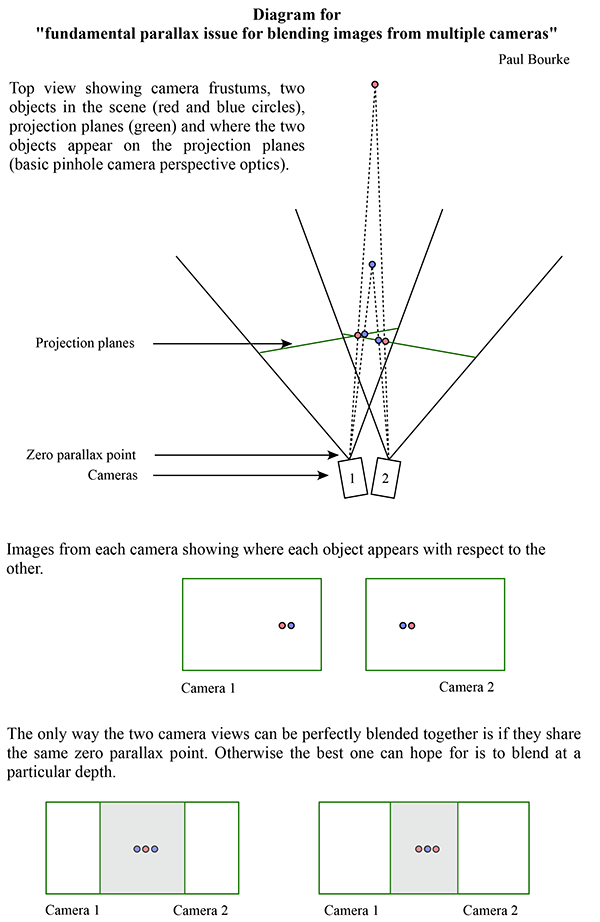
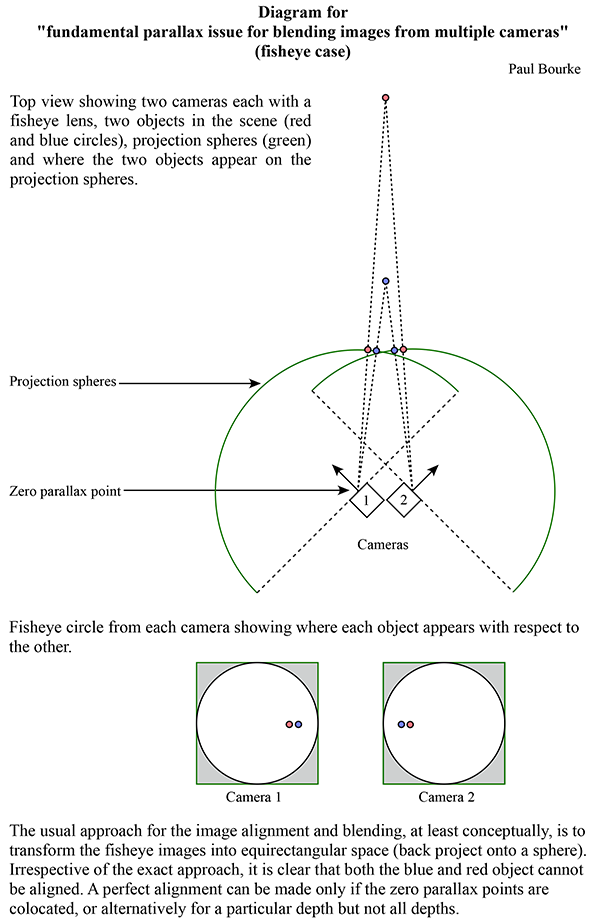
Calculating zero parallax position of a lens/camera systemWritten by Paul BourkeJune 2015
For many applications of multiple image photography it is important to know the zero parallax distance (sometimes called the "nodal point" but that is not strictly the right term) of the lens/camera system. The most common example is when capturing panorama images where one wants to rotate the camera system about the zero parallax point in order to avoid so called parallax errors. This is important because rotating the camera about an arbitrary axis means that the relative positions on the image plane of a close object and a distant object will be different between two photographs, and thus impossible to seamlessly stitch and blend together. There are many procedures one might employ to determine this zero parallax distance and indeed some professional lenses have it marked on the barrel lens. One simple procedure is to align the camera simultaneously with a close object and a more distant one. By definition, if the camera is rotated to the left or right, then these two objects will remain aligned only if the lens is rotated about an axis at the zero parallax. This is illustrated below, obviously the camera is on a tripod and has an easy rotating capability. One can do this procedure by eye but for more precision one can take photographs with the camera rotated clockwise and anticlockwise from the central position, this is repeated for different positions. Three such positions are shown below where a nail and distant lamp post are used for the aligned objects. The relative placement of the nail can be observed for positions of the camera that are less than, equal to and greater than the zero parallax distance. 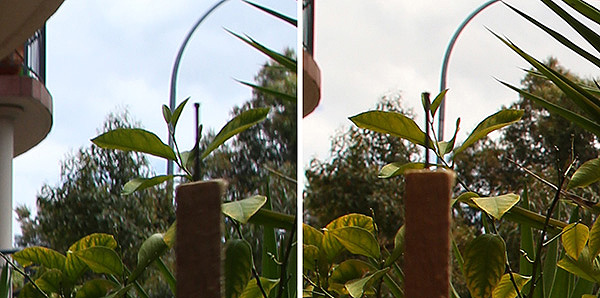 Lens too close.
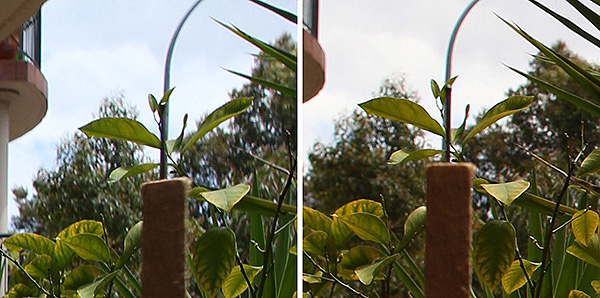 Lens close to zero parallax distance.
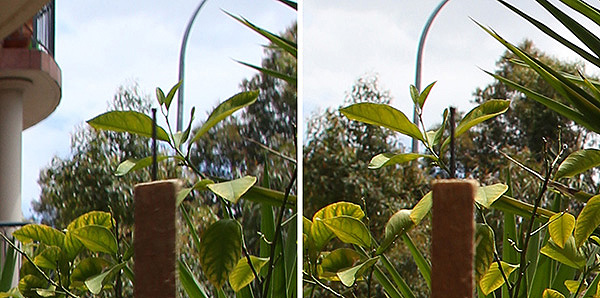 Lens too far away.
The upper and lower image is also a nice illustration as to why such images cannot be perfectly blended together if part of a mosaic or panorama. One could align them to blend the nail or the lamp post, but not both. This can clearly be achieved for the images in the middle figure. 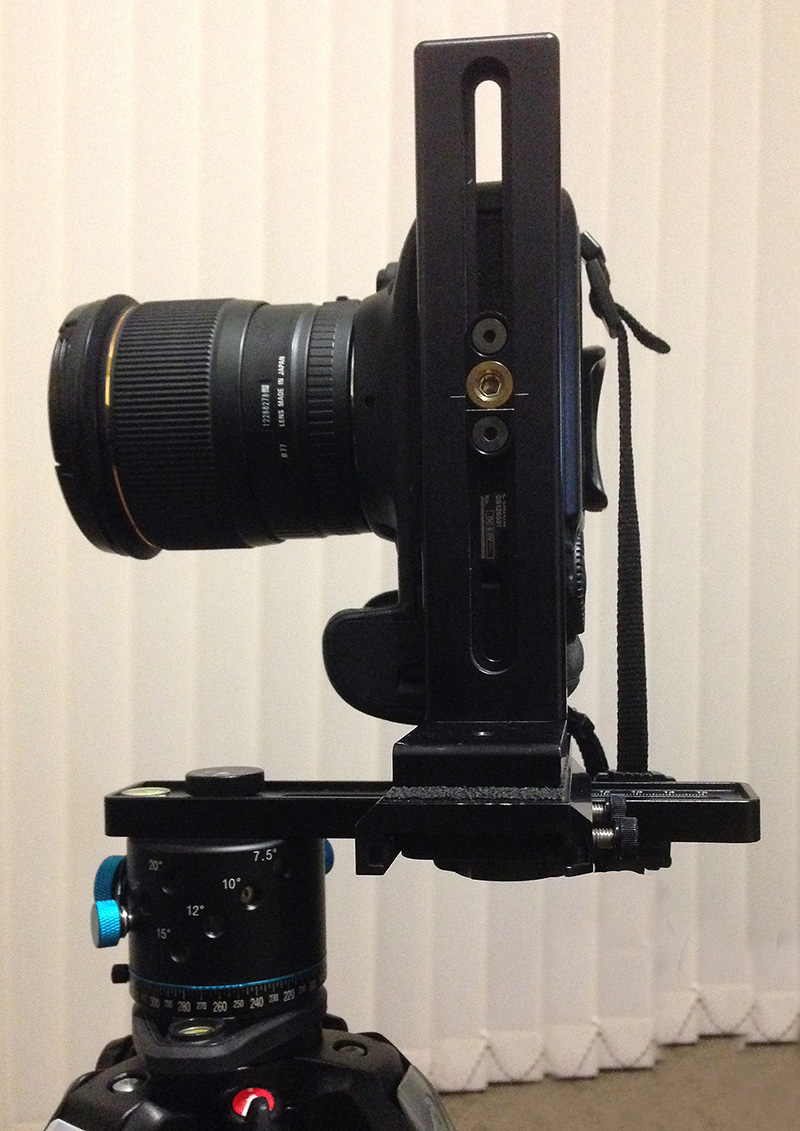
|